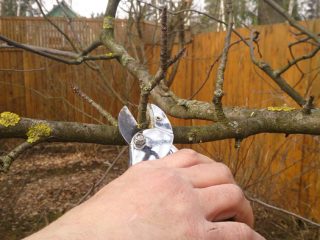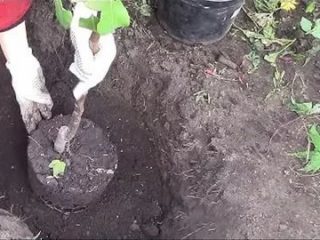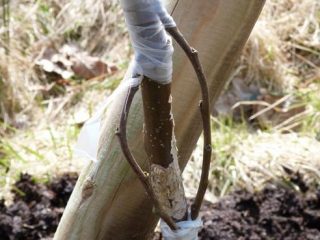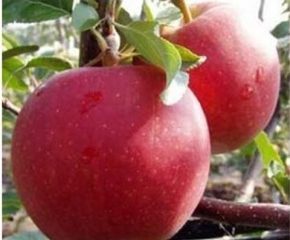Content
There are varieties of apple trees that have been grown in Rus' for a long time. More than one generation remembers the taste of their apples. One of the best is the White Naliv apple tree. Its plump apples are practically the first to open the season. The variety is an achievement of folk selection. It was first described in the book of practical gardener Krasnoglazov, “Rules of Fruit Growing,” which appeared in 1848. But in Bolotov’s works devoted to fruit crops, there is no mention of this variety. Consequently, this apple tree variety began to actively spread in the first half of the 19th century. One of its most detailed descriptions is given in the Atlas of Fruits by A.S. Gribnitsky
I.V. Michurin considered it the most hardy local Russian variety and on its basis developed the famous Chinese Golden Early. But there is still debate about the origin of the White Naliv apple variety.
Origin of the variety
Many believe that White filling first appeared in the Baltic states, but most likely this variety is Russian and comes from the Volga region, where it has been found for a long time. Its other names are Bel, Dolgostebelka, Pudovshchina. But the Papirovka variety, which is very similar to White Naliv, actually came to us from the Baltic coast in the second half of the 19th century.This is evidenced by its name, which is translated from Polish as “paper apple”.
Recently, authoritative reference books do not distinguish between these varieties of apple trees, but back in the 30s of the last century they were described separately.
If you look closely, you can find many differences between them. Let's see how the White filling apple tree and the Papirovka apple tree differ. To do this, we will draw up a detailed description of apple tree variety White filling, compare with Papirovka, look at the photo and read the reviews.
Description of the apple tree variety White filling
The variety is very durable; there are trees that live for more than 70 years and continue to produce fruit, although not very large apples. The apple tree grows well in the middle zone and further north, without freezing even in frosty winters.
Only the conditions of Eastern Siberia, the Northern Urals and the Far East are not suitable for it. But even there it can be bred in the stale form.
The apple tree of the White filling variety is of medium size, growing up to 5 m in height. It has a rounded crown. The bark of the tree is light gray. The leaves are ovate, green, more pubescent below. Their petioles are longer than those of other varieties of apple trees, hence one of the names of the variety - Longstem.
The White filling apple tree blooms in the middle period. The flowers are white, quite large, saucer-shaped, sometimes the petals have a slight pink tint.
In order for this apple variety to produce a good harvest, it needs pollinators that will bloom at the same time as it. As a rule, these are also early varieties: Lungwort, Early aloe, Candy, Cypress, Golden Chinese, Early Grushovka and Moscow Grushovka, Melba.
Late summer and autumn varieties are also suitable: Striefel, Glory to the winners, Zhigulevskoe. White filling also pollinates well with Antonovka, a classic Russian winter apple variety planted nearby.
The main advantage of an apple tree is its fruits. White filling is no exception. These delicious apples are loved by everyone who has tried them. A high tasting score of 4.7 points is confirmation of excellent taste. The shape of apples is round-conical.
Their size depends on the age of the tree: the older it is, the smaller the fruits. Young apple trees will delight you with apples weighing up to 200 g. An adult tree has an average fruit weight of about 100 g. The color of apples changes as they ripen: at first they are greenish, then they become white, and after hanging a little, they are filled with juice and practically translucent in the light. Apples of the White filling variety ripen from the last ten days of July to the second ten days of August, depending on the growing region. The ripening of apples is uneven, which allows them to be harvested gradually. And this is very good, since the thin skin and delicate pulp do not allow them to be stored for more than a week, and with the slightest damage they will become unusable in 3 days.
The taste of apples depends greatly on the degree of ripeness. In slightly unripe fruits it is sweet and sour, the sugar content gradually increases, and the taste becomes dessert-like, with barely perceptible acidity. Apples filled with juice are very tasty. When cut, juice even flows out of the seed chamber.
The harvest of apples from mature trees is quite large and can be up to 80 kg, and with good care - up to 200 kg; the first apples can be collected already 4 years after planting a 2-year-old tree in the garden. With age, apple tree fruiting becomes periodic.
This variety of apple tree cannot be called commercial, it is completely unsuitable for transportation, but for a family garden it is one of the best. The White Fill apple tree has only one serious drawback - severe scab, especially in rainy summers. That is why it should not be planted in lowlands or where there is no sun most of the day. It is very good if the tree crown is ventilated - there will be less dampness.
Now let’s compare this variety with Papirovka. For convenience, we summarize the main indicators in a table.
Comparative table of varieties White filling and Papirovka
| White filling | Padding |
Frost resistance and sunburn resistance | Frost resistance is high, it is slightly affected by sunburn | Frost resistance is average, severely affected by sunburn |
The power of growth | Average | Average |
Crown shape | Round | First pyramidal, then rounded |
Fruit weight and shape | Average weight: 80-100g, in young apple trees up to 200, round-conical shape | Average weight 80-100 g, round-conical shape, often conical ribbed with a clearly visible longitudinal seam |
Ripening time in the middle zone | August 10-25 | August 5-12 |
Tendency to fall | Only fruits affected by the codling moth fall | In dry years, the fruits drop quite heavily |
Disease resistance | Scab is severely affected | Scab affects moderately, affects black cancer |
The table shows that these varieties of apple trees have differences. However, everything is not so simple here.The varietal characteristics of an apple tree strongly depend on the location and growing conditions. Therefore, many varieties have local clones with properties that differ from the original variety. The large growing area of the White Fill apple tree makes the appearance of various deviations from varietal characteristics very likely, especially if they are fixed in several generations propagated vegetatively. Most likely, all the variety of forms and clones hidden under the common names White filling and Papirovka is caused precisely by these reasons.
Chemical composition and benefits
This variety of apples is rich in pectin substances - up to 10% of the weight of apples. The balanced composition of sugars, the share of which is 9%, and acids, which are only 0.9%, creates the unforgettable taste of White filling apples. But the greatest wealth of these fruits is their very high vitamin C content - 21.8 mg for every 100 g of pulp. It is enough to eat just 3 apples to get your daily requirement of ascorbic acid. It’s a pity that the fresh consumption time for these apples is very short. But they make excellent compotes and amber-colored fragrant jam. The absence of bright coloring pigments allows these fruits to be used in the diet of young children, since there are no allergies to them.
To enjoy these delicious preparations in winter, you need to properly care for the trees. White filling apple trees are planted both in autumn and spring. Seedlings should be dormant at the time of planting. When planting in autumn, the apple tree seedling will need a month to take root before the onset of frost and freezing of the soil. Based on this, determine planting dates.
Preparing the planting hole
This variety of apple trees is very tenacious and will grow almost anywhere, but a good harvest of large fruits can only be obtained if the following conditions are met:
- there should not be high groundwater levels on the site;
- the soil should be light in mechanical composition, highly nutritious, preferably loamy or sandy loam;
- the water on the site should not stagnate, so it is not worth planting White filling in lowlands;
- the apple tree should be well lit by the sun;
- This variety does not tolerate drought, so there should be enough moisture in the soil.
A planting hole 0.8 m deep and the same diameter is dug in advance, at least a month before planting. If it is carried out in the fall, it is enough to fill the hole with humus mixed with the top layer of soil in a 1:1 ratio. It’s good to add 0.5 liters of ash there.
Attention! Fertilizer - 150 g of potassium salt and superphosphate, sprinkle the soil in the tree trunk circle after planting.
When planting in spring, fertilizers are added to the last portion of soil with which the seedling is sprinkled. A peg is placed in the planting hole to tie up the planted young tree.
Apple tree planting
A young apple tree with an open root system is prepared for planting: the roots are inspected and damaged ones are cut off, the cuts are treated with crushed coal, and soaked in water for 24 hours so that the seedling is saturated with moisture.
Pour prepared soil into the hole to form a mound, pour in 10 liters of water, install the apple tree, carefully straightening the roots. Fill the rest of the soil, sometimes shaking the seedling a little to remove air bubbles from the soil. Add soil mixed with fertilizers and pour in another 10 liters of water.
The soil in the tree trunk circle is compacted and mulched.
Caring for young apple trees
At first, until the roots take root, the young tree needs watering every week - at least a bucket per seedling. In the future, watering is carried out as necessary, preventing the soil from drying out.
Immediately after planting, the central shoot of a one-year-old apple tree seedling is shortened by 1/3, and the side branches of a two-year-old one are shortened. In the future, annual pruning will be required. Don't forget about crop rationing. To do this, pluck out some of the flowers, otherwise the apples will be small.
Feeding should be done several times during the growing season so that the apple trees do not experience nutritional deficiencies. In the spring and until mid-July, the apple tree needs 2-3 times fertilizing with a complete complex fertilizer, preferably in soluble form, to be applied when watering. In the fall, you need to limit yourself to only potassium and phosphorus fertilizers, but additionally mulch the tree trunk circle with humus. Young trees need protection from hares; for this, apple tree trunks are wrapped in any available material that allows air to pass through.
Apple tree White filling requires mandatory treatment against scab. Before buds begin to bloom, copper-containing preparations and fungicides are used. During flowering, it is better to use whey.
In the fall, preventive treatment of apple trees is carried out with copper-containing preparations or fungicides, but only after the end of leaf fall. This must be done at positive temperatures.
If you follow all the rules for caring for trees, you are guaranteed a large harvest of tasty and healthy apples.
Reviews



















